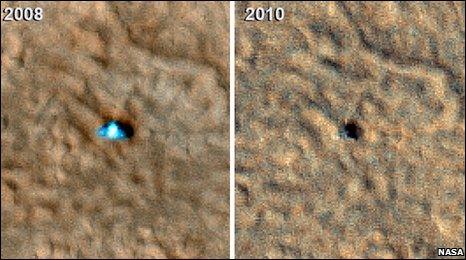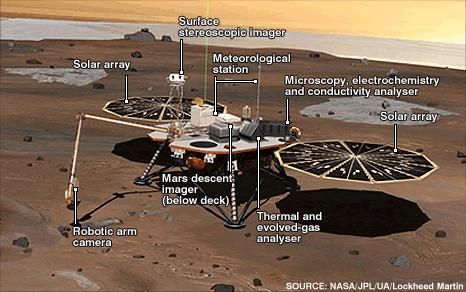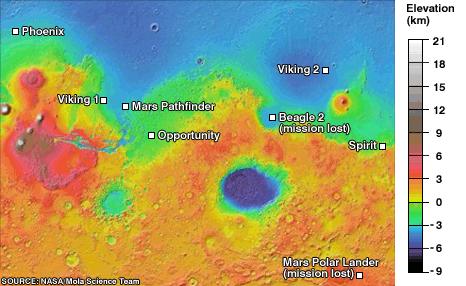Nasa's Phoenix Mars lander 'broken by ice'
- Published

A much diminished outline is apparent in the latest images
New images appear to confirm that Nasa's Phoenix lander broke apart during Mars' winter.
The static spacecraft, which was sent to study the planet's "high Arctic", lost contact with Earth in late 2008.
Phoenix would have been covered by carbon dioxide ice, and Nasa always said it was likely the mission would be destroyed in such harsh conditions.
The latest pictures taken from orbit show Phoenix to have a smaller outline, indicating it was badly damaged.
"Before and after images are dramatically different," said Michael Mellon of the University of Colorado in Boulder, a science team-member for both Phoenix and the HiRISE camera on the Mars Reconnaissance Orbiter which acquired the new data.
"The lander looks smaller, and only a portion of the difference can be explained by accumulation of dust on the lander, which makes its surfaces less distinguishable from surrounding ground."

Phoenix was sent to Mars with seven science instruments
The difference in the pattern of shadows is said to be consistent with the predictions of how Phoenix could be damaged by the build up of frost.
It was expected the panels would bend and buckle under the weight of many tens of kilos of ice.
Launched from Earth in August 2007, the robot arrived on Mars on 25 May 2008, landing further north than any previous mission to the Martian surface.
To make it down, the probe had to survive a fiery plunge through the Red Planet's thin atmosphere, releasing a parachute and using thrusters to control its descent.
The mission was scheduled to last just three months on the surface, but continued to work for more than five months.
During its ground operations, the robot dug, scooped, baked, sniffed and tasted the Martian soil to test whether it has ever been capable of supporting life.
Phoenix's major achievement was in becoming the first mission to Mars to "touch water" in the form of the water-ice it found just centimetres below the topsoil. Chunks of ice were seen to vaporise before the lander's cameras.

Phoenix landed further north than previous missions